Epic House - The best renting online platform
What To Visit
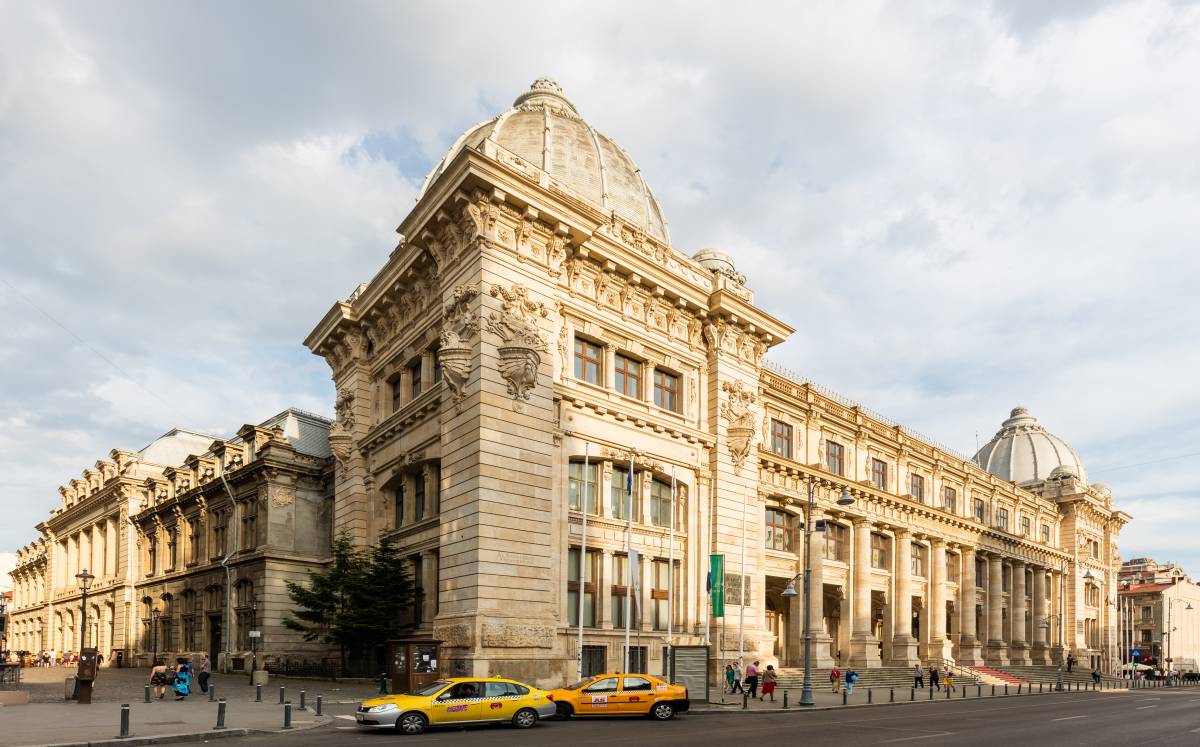 Muzeul National de Istorie/ Museum of National History of Romania
Muzeul National de Istorie/ Museum of National History of Romania
EN: The building with lion heads in Calea Victoriei was originally the headquarters of the Central Post Office, built between 1894 and 1900. The project was carried out according to the plans of architect Alexandru Savulescu. He visited post offices in several European countries, and the one that – is said – inspired him the most was the one in Geneva. In 1968 the building became the Museum of National History of Romania. It hosts over 3000 exhibits of metals and precious stones, gold and silver treasures discovered on the territory of Romania and dating from ancient times – coins, weapons, harness pieces etc. Among the most important pieces are the treasures discovered at Pietroasa and Apahida, the cult objects and jewels of the rulers, the, as well as the royal crowns worn by Charles I and Ferdinand I or the queens Elizabeth and Mary. Lapidarium hosts at the lower level the natural-scale copy of Trajan's column in Rome, and at the upper level – pieces of marble, limestone or sandstone, dating from the Greek-Roman period, the, late Roman era and the Romanian middle ages.
Price:
Adults – 20 lei/person
Pensioners – 10 lei/person
Pupils, students, adults with medium or light disability, cardholders „Euro 26” – 5 lei/person.
RO: Clădirea cu capete de lei din Calea Victoriei a fost iniţial sediul Poştei Centrale, construită între 1894 şi 1900. Proiectul a fost realizat după planurile arhitectului Alexandru Săvulescu. Acesta a vizitat sedii ale poştelor din mai multe ţări europene, iar cel care – se spune – l-a inspirat cel mai mult a fost cel din Geneva. În 1968 imobilul a devenit Muzeul de Istorie Naţională a României. Găzduieşte peste 3000 de exponate din metale şi pietre preţioase, tezaure de aur şi argint descoperite pe teritoriul României şi datând din cele mai vechi timpuri – monede, arme, piese de harnaşament etc. Pintre cele mai importante piese se numără tezaurele descoperite la Pietroasa şi Apahida, obiecte de cult şi bijuterii ale domnitorilor, precum şi coroanele regale purtate de Carol I şi Ferdinand I sau reginele Elisabeta şi Maria. Lapidariumul găzduieşte la nivelul inferior copia la scară naturală a columnei lui Traian din Roma, iar la nivelul superior – piese din marmură, calcar sau gresie, datând din perioada greco-romană, epoca romană târzie şi din evul mediu românesc.
Preț:
Adulți – 20 lei/persoană
Pensionari – 10 lei/persoană
Elevi, studenți, persoane adulte cu handicap mediu sau ușor, posesori card „Euro 26” – 5 lei/persoană.
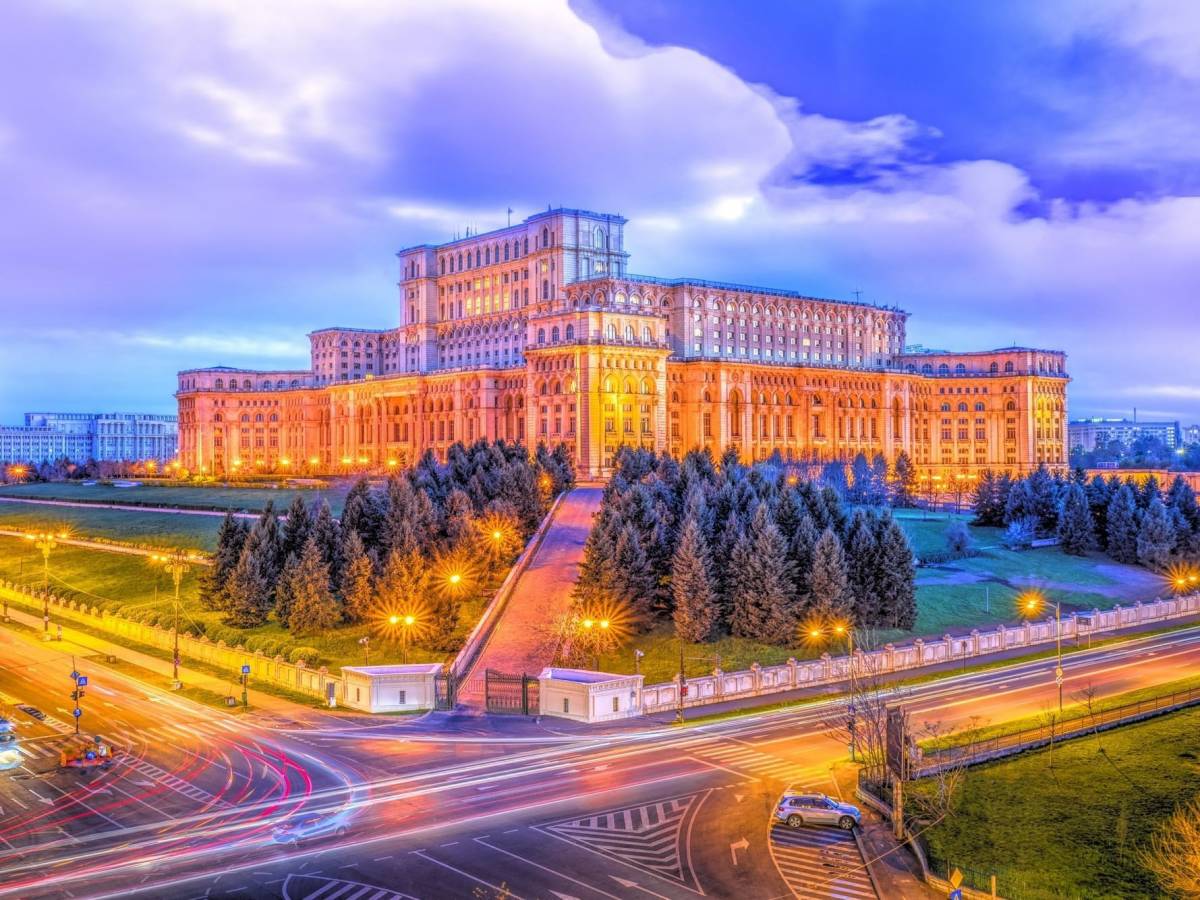 Palatul Parlamentului
Palatul Parlamentului
EN: One of the main tourist attractions in Bucharest is undoubtedly the Palace of Parliament – the second administrative building in the world (after the Pentagon) as a surface. In the past, it was called the People's House, being one of the biggest projects of Nicolae Ceausescu. The building is built entirely of white marble and has over 1000 rooms, some of which are available for visiting. Interestingly, the old communist leader demolished an entire neighborhood to erect this building. Thus, in those times, about 40,000 people were moved to other areas of Bucharest.
Standard Tour
Adults: 60 lei/person
Students: 30 lei/person (19 - 26 years, with student card)
Children: 20 lei/person (7 - 18 years)
RO: Una dintre principalele atracții turistice din București este, fără nicio îndoială, Palatul Parlamentului – a doua clădire administrativă din lume (după Pentagon) ca suprafață. În trecut, i se spunea Casa Poporului, fiind unul dintre cele mai mari proiecte ale lui Nicolae Ceaușescu. Clădirea este construită, în totalitate, din marmură albă și are peste 1000 de încăperi, o parte dintre acestea fiind disponibile spre vizitare. Interesant este și faptul că vechiul conducător comunist a demolat un întreg cartier pentru a ridica această clădire. Astfel, în acele vremuri, aproximativ 40.000 de oameni au fost mutați în alte zone ale Bucureștiului.
Tur Standard
Adulţi: 60 lei/persoană
Studenţi: 30 lei/persoană (19 - 26 ani, cu carnet de student vizat)
Copii: 20 lei/persoană (7 - 18 ani)
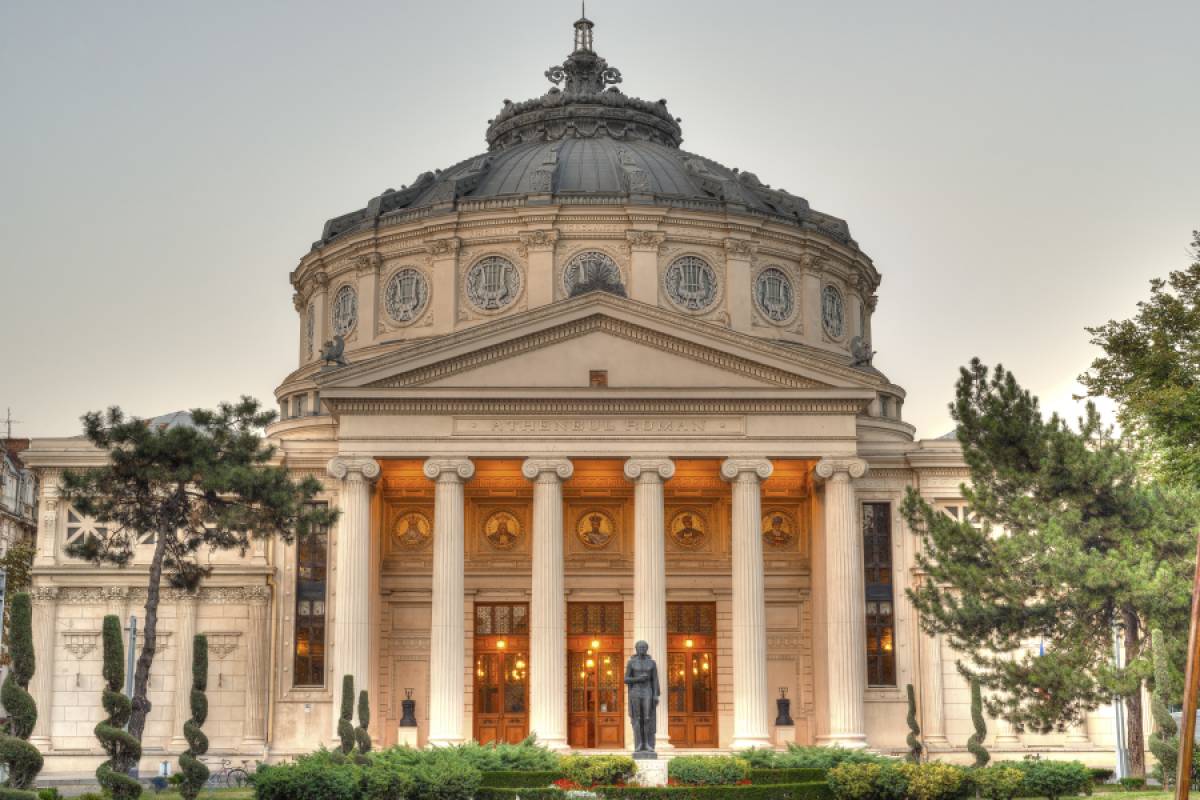 Ateneul Roman/The Roman Athenaeum
Ateneul Roman/The Roman Athenaeum
EN: The Romanian Athenaeum must be placed on the list of places to see in Bucharest. Being a symbolic building for the capital, the Romanian Athenaeum hosts today a series of exceptional events, performances and concerts. Built between 1886 and 1888, the building is also the headquarters of the “George Enescu” Philharmonic. As for the architectural style, the construction is distinguished by the domes resembling those of the Acropolis temple. Besides, you must know that the Romanian Athenaeum is part of the List of Historical Monuments of Romania. You find him on Benjamin Franklin Street.
RO: Ateneul Român trebuie pus pe lista cu locurile de văzut în București. Fiind o clădire simbolică pentru capitală, Ateneul Român găzduiește și astăzi o serie de evenimente, spectacole și concerte excepționale. Construită între anii 1886 și 1888, clădirea este și sediul Filarmonicii “George Enescu”. În ceea ce privește stilul arhitectural, construcția se evidențiază prin cupolele asemănătoare celor de la templul Acropole. De altfel, trebuie să știi că Ateneul Român face parte din Lista Monumentelor Istorice din România. Îl găsești pe Strada Benjamin Franklin.
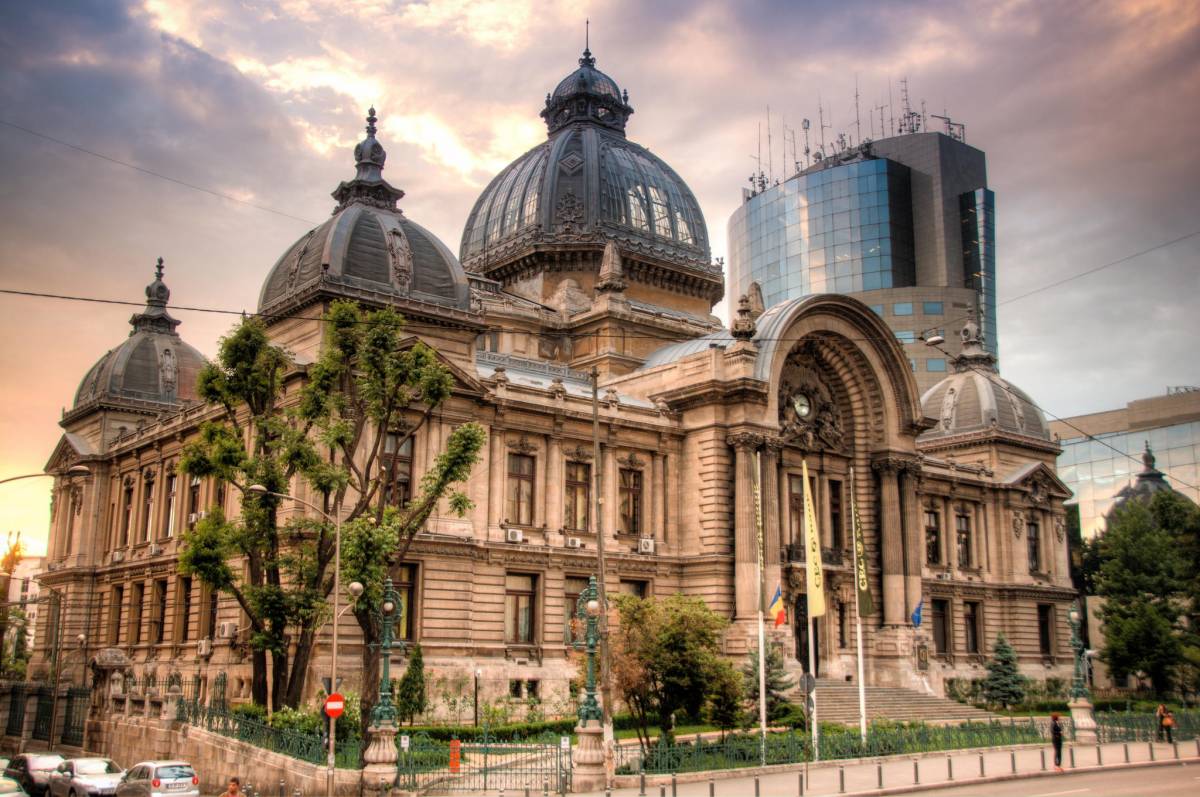 Palatul CEC/CEC Palace
Palatul CEC/CEC Palace
EN: Many agree that CEC Palace is one of the most beautiful buildings in Bucharest, if not the most beautiful. Located somehow at „border” Old Town (you have to cross Calea Victoriei to enter its premises), this work of architectural art stands on the place where once stood the church of the Monastery of Saint John the Great, erected during the period of the ruler Michael the Brave (16th century). However, it came to a halt, being demolished in 1875, so that in 1897 the construction of the building to be occupied by the House of Deposits, Consignments and Economy, would begin, institution established in 1864.
RO: Mulți sunt de acord că Palatul CEC este una dintre cele mai frumoase clădiri ale Bucureștiului, dacă nu cumva chiar cea mai frumoasă. Situată cumva la „granița” Centrului Vechi (trebuie să traversezi Calea Victoriei ca să-i intri în incintă), această operă de artă arhitectonică stă pe locul în care odinioară s-a aflat biserica Mânăstirii Sfântul Ioan cel Mare, ridicată în perioada domnitorului Mihai Viteazul (secolul 16). Aceasta a ajuns însă în paragină, fiind dărâmată în 1875, pentru ca în 1897 să se înceapă construcția clădirii ce avea să fie ocupată de Casa de Depuneri, Consemnațiuni și Economie, instituție înființată în 1864.
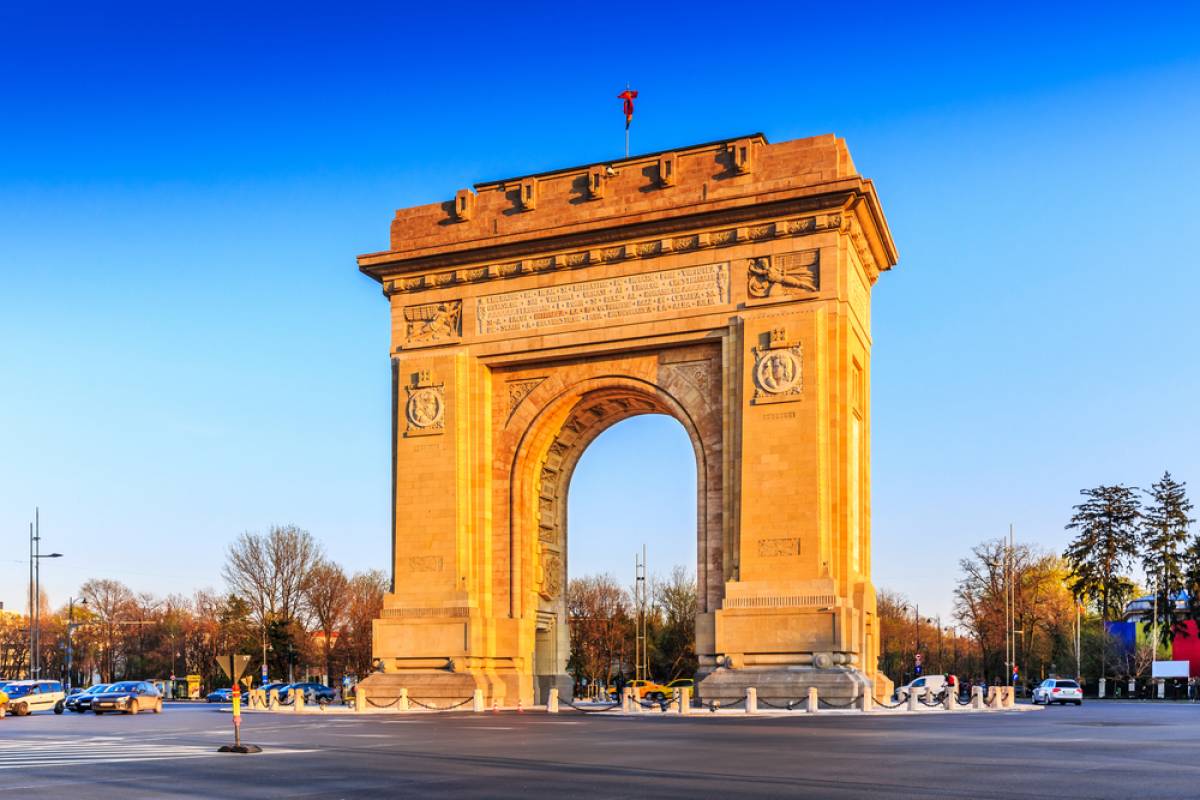 Arcul de Triumf/ The Arc de Triomphe
Arcul de Triumf/ The Arc de Triomphe
EN: I was saying at the beginning of this article that Bucharest is considered to be the little Paris. Here is the living proof! If you take a walk on the Kiseleff road, at the intersection with the boulevards Constantin Prezan, Alexandru Averescu and Alexandru Constantinescu, you will discover the Arc de Triomphe – a monument made after the famous model in Paris. Built in 1922, the Arc de Triomphe is 27 meters high and can be visited even indoors.
Tourist attraction - FREE
RO: Spuneam la începutul acestui articol că Bucureștiul este considerat a fi micul Paris. Iată și dovada vie! Dacă faci o plimbare pe șoseaua Kiseleff, la intersecția cu bulevardele Constantin Prezan, Alexandru Averescu și Alexandru Constantinescu, vei descoperi Arcul de Triumf – un monument realizat după celebrul model din Paris. Ridicat în anul 1922, Arcul de Triumf are o înălțime de 27 de metri și poate fi vizitat chiar și în interior.
Obiectiv turistic - GRATIS
Fântânile din Piața Unirii/ The Fountains in Unirii Square
EN: You are still wondering what you can visit in Bucharest? The fountains from Unirii Square were rehabilitated in 2018 and represent an important tourist point of the capital. If you have not already planned your vacation, then we recommend checking the calendar with days off in 2024. See when you can go on a trip around the country and start from the capital. If you want to enjoy a real show of water and lights, then it would be recommended to plan a trip between May and October. It is also interesting that the Fountains of the Unirii were built during the communist regime and since then, “to fountains” has become a landmark for those who meet in the capital.
Tourist attraction - FREE
RO: Încă te întrebi ce poți vizita în București? Fântânile din Piața Unirii au fost reabilitate în 2018 și reprezintă un important punct turistic al capitalei. Dacă nu ți-ai planificat deja vacanța, atunci îți recomandăm să verifici calendarul cu zile libere in 2024. Vezi când poți pleca într-o excursie prin țară și pornește din capitală. Dacă vrei să te bucuri de un adevărat spectacol de apă și lumini, atunci ar fi recomandat să planifici o călătorie între lunile Mai și Octombrie. Interesant este și faptul că Fântânile de la Unirii au fost construite în timpul regimul comunist și, încă de pe atunci, “la fântâni” a devenit un punct de reper pentru cei care își dau întâlnire în capitală.
Obiectiv turistic – GRATIS
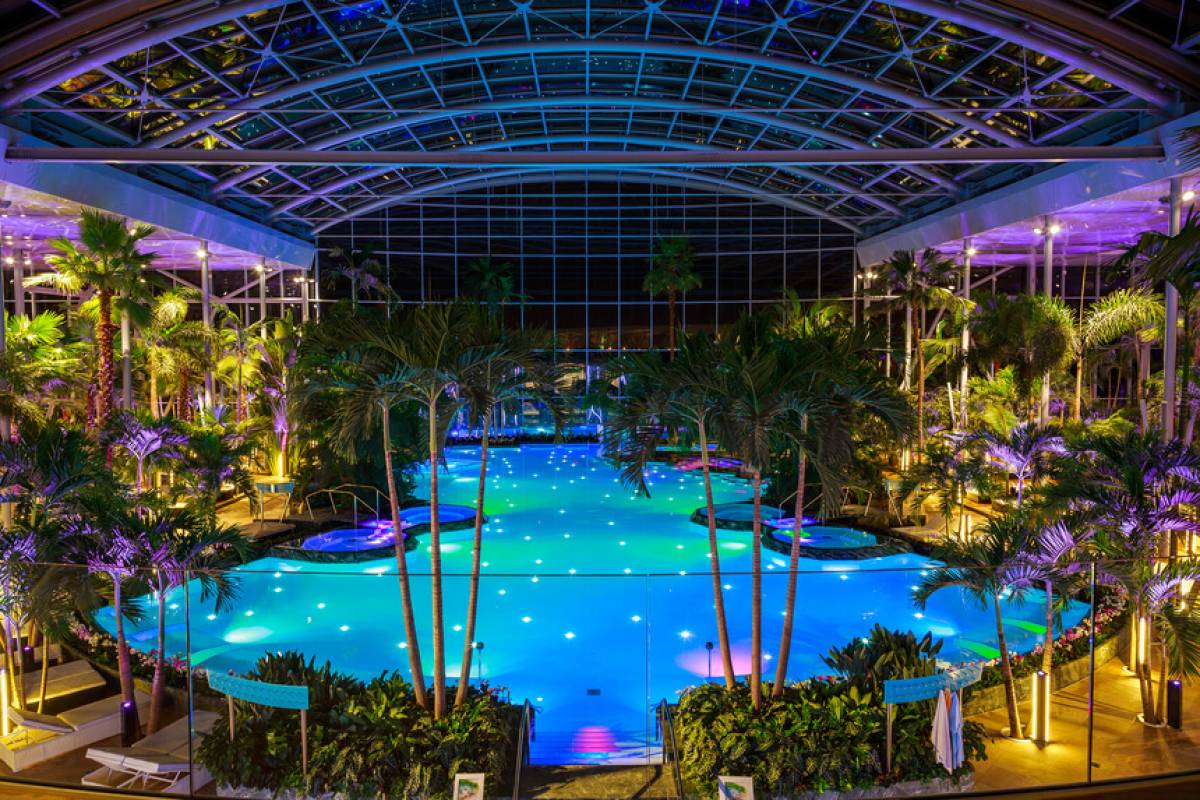 Therme Bucharest
Therme Bucharest
EN: Therme Bucharest. A real oasis with exotic plants, wave pools and slides with thermal water that you can enjoy even if outside are minus 25 degrees. At Therme, the air temperature is always 29-30 degrees, and the water temperature is 30-33 degrees, ideal for fun and whimpering.
More info: https://therme.ro/
RO: Therme Bucuresti. O adevarata oaza cu plante exotice, piscine cu valuri si tobogane cu apa termala de care poti sa bucuri chiar daca afara sunt minus 25 de grade. La Therme, temperatura aerului este intotdeauna de 29-30 de grade, iar a apei, de 30-33 de grade, ideala pentru distractie si balaceala.
More info: https://therme.ro/
